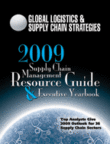
Visit Our Sponsors |
|
|
|
|
|
|
|
|
|
|
|
|
|
|
|
|
|
|
|
|
|
|
|
|
|
|
|
|
|
|
|
|
|
|
|
|
|
|

What a difference a year makes. On Oct. 9, 2007, the Dow Jones Industrial Average reached an all-time high of 14,279. One year later the index was down almost 40 percent, hovering in the 8,200 to 8,800 range. Stock values were not the only metric to swing wildly as oil prices, currency exchange rates and consumer confidence levels also experienced a roller coaster ride. One of the most telling statistics for manufacturing is the Institute of Supply Management's PMI number. The October value represented the third consecutive month of economic contraction after 83 consecutive months of growth.
There is no shortage of bad news and indicators, but the large manufacturing firms we speak with realize that with a downturn comes an inevitable recovery. Even the automotive industry talks about past patterns of their industry being "first in, first out" when it comes to a recession and being ready to serve the pent-up demand. Economic downturns also represent an opportunity for manufacturing companies to recalibrate their operations. Channel partners can be rationalized, inventories reduced, production assets modernized, and, most importantly, supply and demand can be rebalanced in preparation for a recovery. Given the challenging economic environment in 2009 and manufacturers' intentions for austerity in IT investments, Manufacturing Insights offers the following supply chain predictions for 2009:
• Companies will exploit well-performing existing tangible and, especially, intangible supply chain assets to ride out the financial crisis and prepare for recovery.
• Modern supply chain organizations will put expenditure budgets under greater scrutiny and new investments will be cost-savings focused, requiring shorter payback periods.
• Companies will "right-size" their supply chains for profitable proximity and take a total landed cost approach to product sourcing.
• Supply chain technology initiatives must support the standard business platform and focus on modernization and decision-making.
• Economic uncertainty causes manufacturer "brand owners" to consider strategic investments at critical supply points and financial support for key suppliers.
• CRM and consumer-centricity efforts continue to grow across the modern supply chain as manufacturers attempt to provide the right kinds of innovation and new products.
• High 2008 year-end inventory levels will cause manufacturers to look at supply/demand rebalancing with a focus on strategic network optimization and multi-echelon inventory optimization tools.
• Compliance-driven RFID initiatives continue to wane in favor of ROI-driven asset-tracking and security applications as manufacturers increasingly look at RFID as "just another tool in the toolkit."
• As global economic pressures mount, outsourcing opportunities proliferate and global supply networks become more complex, risk management becomes both an increasingly significant capability and a key differentiator for the modern supply chain.
• Sustainability discovers metrics. No longer a feel-good public relations proposition or even a regulatory compliance mandate, emerging standard measures and a desire to benchmark will impact sustainability initiatives and the associated investment in technology and services.
The Outlook
The large manufacturing firms realize that with every economic downturn comes an inevitable recovery, as well as the opportunity to rationalize channel partners, reduce inventories, modernize production assets and rebalance supply and demand. In 2009, those are both the challenges and opportunities.
RELATED CONTENT
RELATED VIDEOS
Timely, incisive articles delivered directly to your inbox.






